
Treat Yourself With These 10 Low Glycemic Fruits LowGlycemicDinners in 2020 Low glycemic
Fresh mango glycemic index is 55, a low GI, bordering on moderate. This is the average GI value for the fruit. However, mango is not always a low-glycemic fruit. Some mangoes are higher on the glycemic index scale, 56 and upwards, up to about 60. It's also possible for mango to be lower than 55 on the glycemic index (it can go as low as 40-50).

Mango glycemic index & health benefits NourishDoc
The glycemic index (GI) measures how a food affects your blood sugar. Foods that are low on the scale raise it slowly. Those high on the scale raise it quickly. Eating mostly low-GI foods can.

Mango GLYCEMIC INDEX based on 3 tests from India among others
How the food is prepared (cooking, freezing, and thawing) alters the glycemic index. These may lower or raise the glycemic index. Rather than just focusing on the glycemic index, focus on the glycemic load, which considers the portion of the food you are going to eat. Mango is Anti-inflammatory According to various clinical studies, eating.
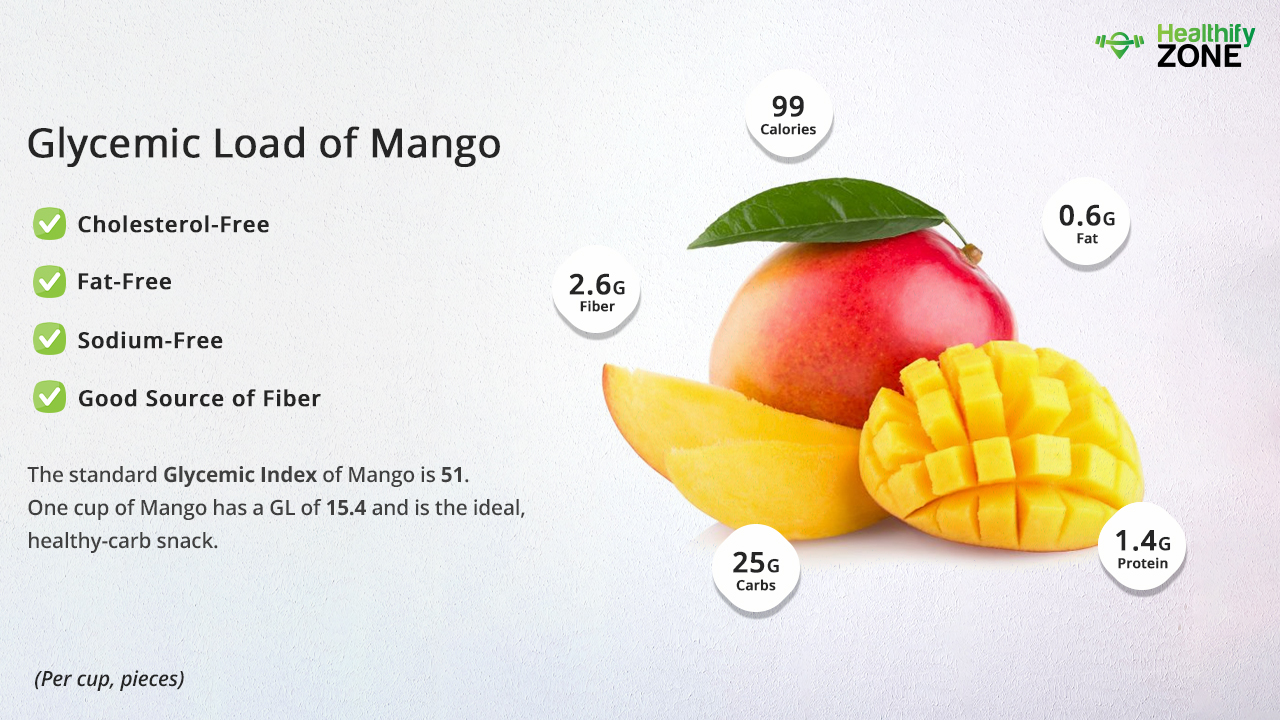
Glycemic Index of Mango or Aam
Mangoes are a fruit high in natural sugars. Some research suggests that the fruit may combat high cholesterol, obesity, and diabetes. Mangoes are a sweet fruit that contains fiber and a.

Tips to Eat Mangoes for diabetic Patient Range of Glycemic Index for Mango ? YouTube
In a randomized crossover design, 27 overweight and obese adults (11 females, 16 males, age 26 ± 8.1 years) consumed 100 Kcal of fresh mangos (166g) or isocaloric low-fat cookies (24g) daily for 12 weeks. Following an overnight fast, a venous blood draw was taken at baseline, week 4, and week 12.
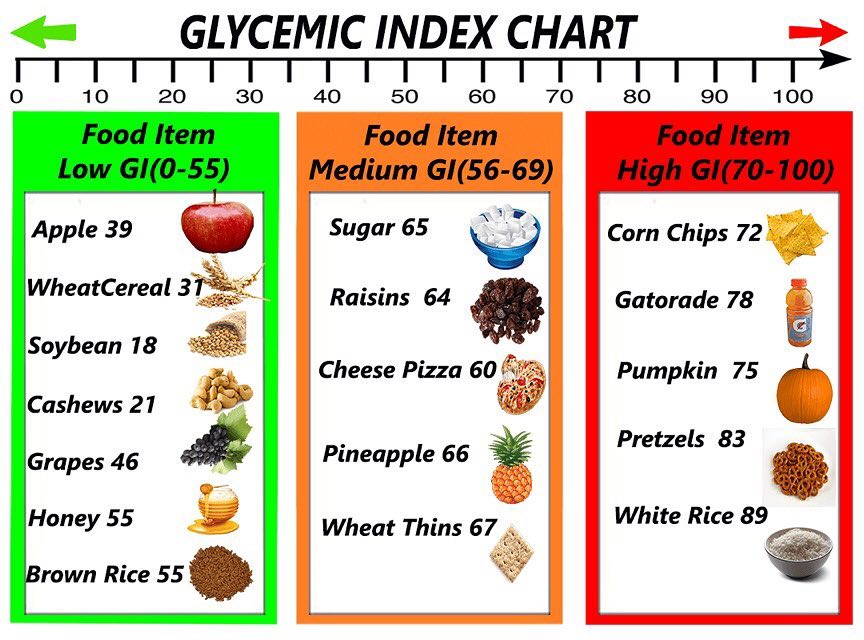
Propuštění mít na sobě cena low glycemic index food list Iluze Obojživelný Tleskat
The glycemic index classifies carbohydrate-containing foods according to their potential to raise your blood sugar level. Foods with a high glycemic index value tend to raise your blood sugar higher and faster than do foods with a lower value. The glycemic index may have some benefits, but may have some problems too. Concerns include:
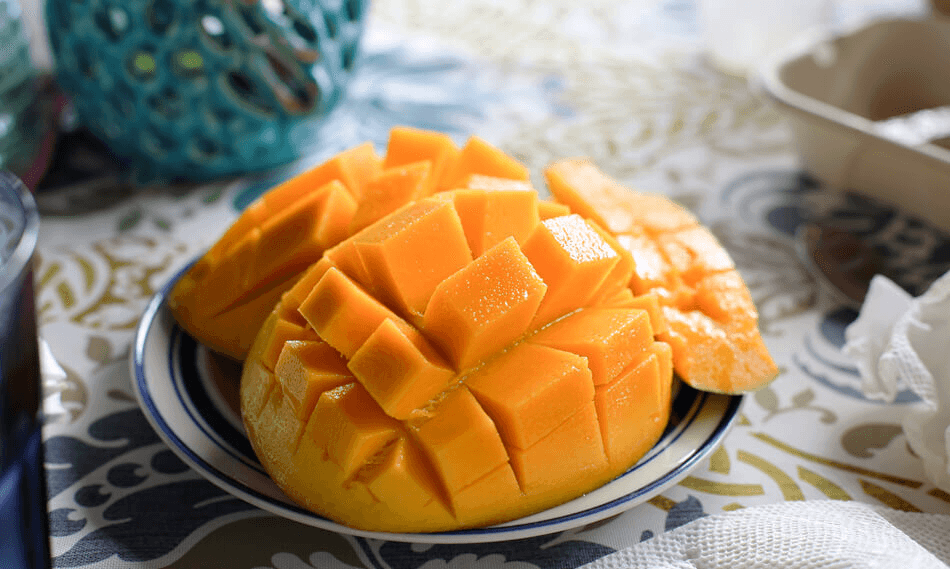
Is Mango Good for Diabetes? Glycemic Index HealthReporter
The glycemic index (GI) is a value used to measure how much specific foods increase blood sugar levels. Foods are classified as low, medium, or high glycemic foods and ranked on a scale of 0-100.

mango glycemic index Archives Lorena Drago, MS, RDN, CDN, CDE
What Is the Glycemic Index of Mango? How Does Eating Mango Impact Blood Sugar? Mango vs. Prediabetes vs. Diabetes 7 Benefits of Eating Mango 1. Helps to fight cancer 2. Supports cholesterol levels 3. Promotes healthy eyes 4. Improves digestion 5. Helps against heart diseases 6. Boosts immune system 7. Helps treat anemia
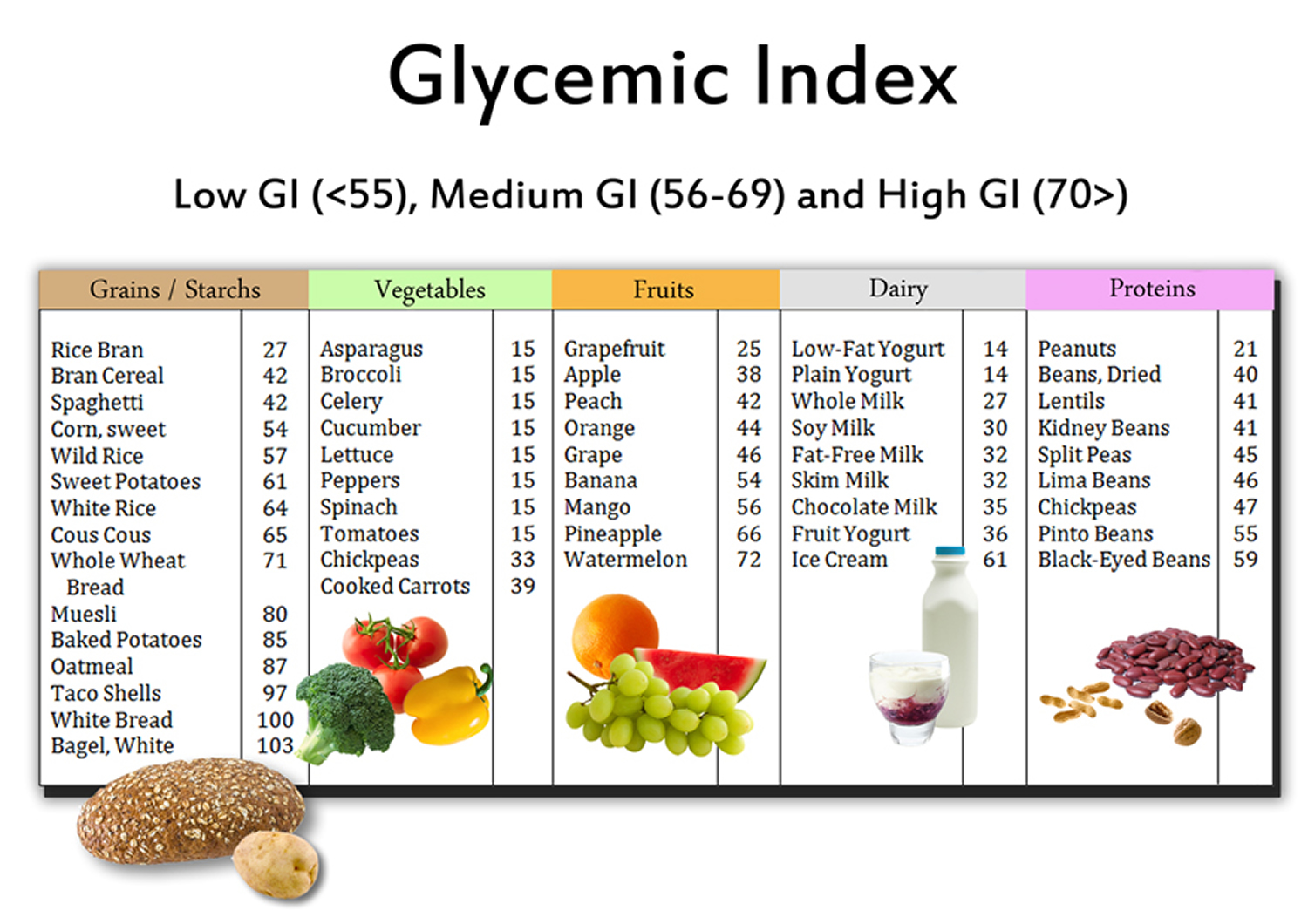
Glycemic Index Chart Printable
Glycemic index (GI) is a scale from 1 to 100 that shows how quickly, or how slowly, a food raises your blood sugar. Foods are assigned a value based on the food eaten by itself, without the influence of other foods. Be aware that the serving size changes for each food.

Mango Glycemic Index (Low GI 48) The Gestational Diabetic
The mango glycemic index is 51, which classifies it as a low GI food. Mangoes also offer many health benefits & pack essential vitamins and minerals, making them a great addition to many diets. Originally from South Asia, mangoes made their approach across the tropics and into America in 1880.

Sugar free fruits, Fruit and Charts on Pinterest
The glycemic index of mango can change depending on the various usages and forms of the mango. According to the "International Tables of Glycemic Index: 2021", the glycemic index of raw mango from the Philippines, scientifically called Mangifera indica, is 41, while the GI of raw Australian mango is 51±3 (1).. The ripening process increases the sugar levels within the fruit, subsequently.
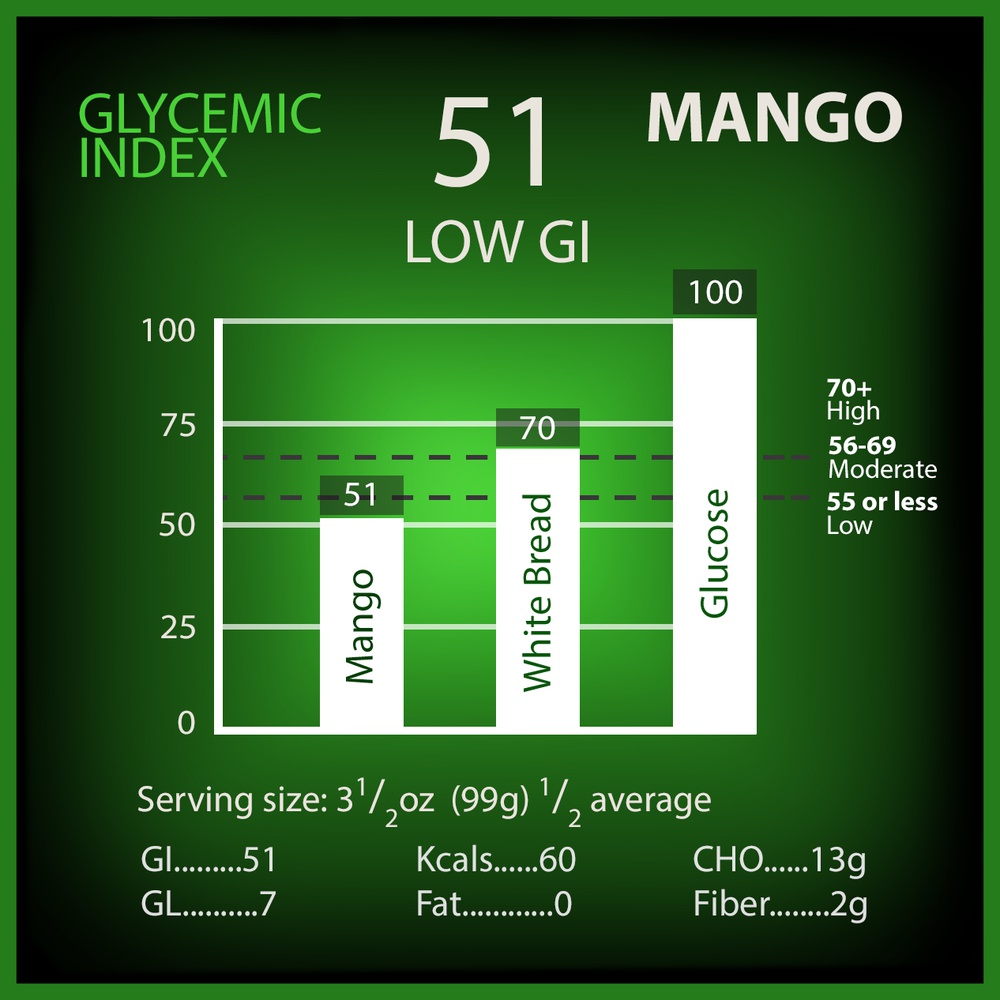
Nutrition Factors
The updated international glycemic index tables show mango as low glycemic with an index value of 48, and a low glycemic load of 7. Glycemic load changes with portion sizes. For example, a ½-cup serving of mango has a low glycemic load of 7, but a 1-cup serving has a medium glycemic load of 12. How can it change so much?

Pin on Be Well
Columbian mangos have 13.7 grams of sugar. African varieties like Sudanese mangos may contain anywhere from 10.5 to 32.4 percent sugar. A 100 gram serving of Ataulfo mangos contains 14 grams of sugar. The sugar in mangos is usually found in the form of sucrose (made up of glucose and fructose), then fructose, then glucose.

Mango Glycemic Index (Low GI 48) The Gestational Diabetic
The glycemic index of mango is estimated to be about 51. Foods with a glycemic index of 55 or lower are generally considered low glycemic foods. The glycemic load of a one-cup serving of mango is estimated to be 8.
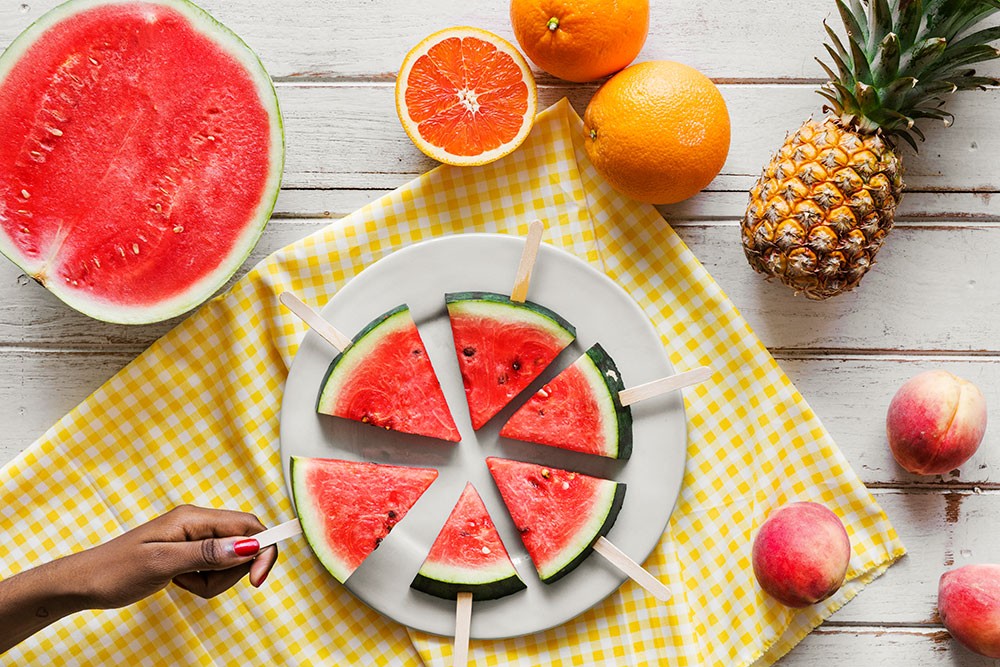
Is Watermelon Good or Bad For Diabetes?
The glycemic load (GL) of mango is equal to 8.4, which classifies it as a low GL food. Mango: Calories and Nutritional info 100 grams of mango contain 60 kcal (251 kJ), 0.8 grams of proteins, 15.0 grams of carbohydrates, and 0.4 grams of fats. Glycemic index of related foods: Apricots (canned in syrup) Acerola, Barbados Cherry (fresh) Green grapes
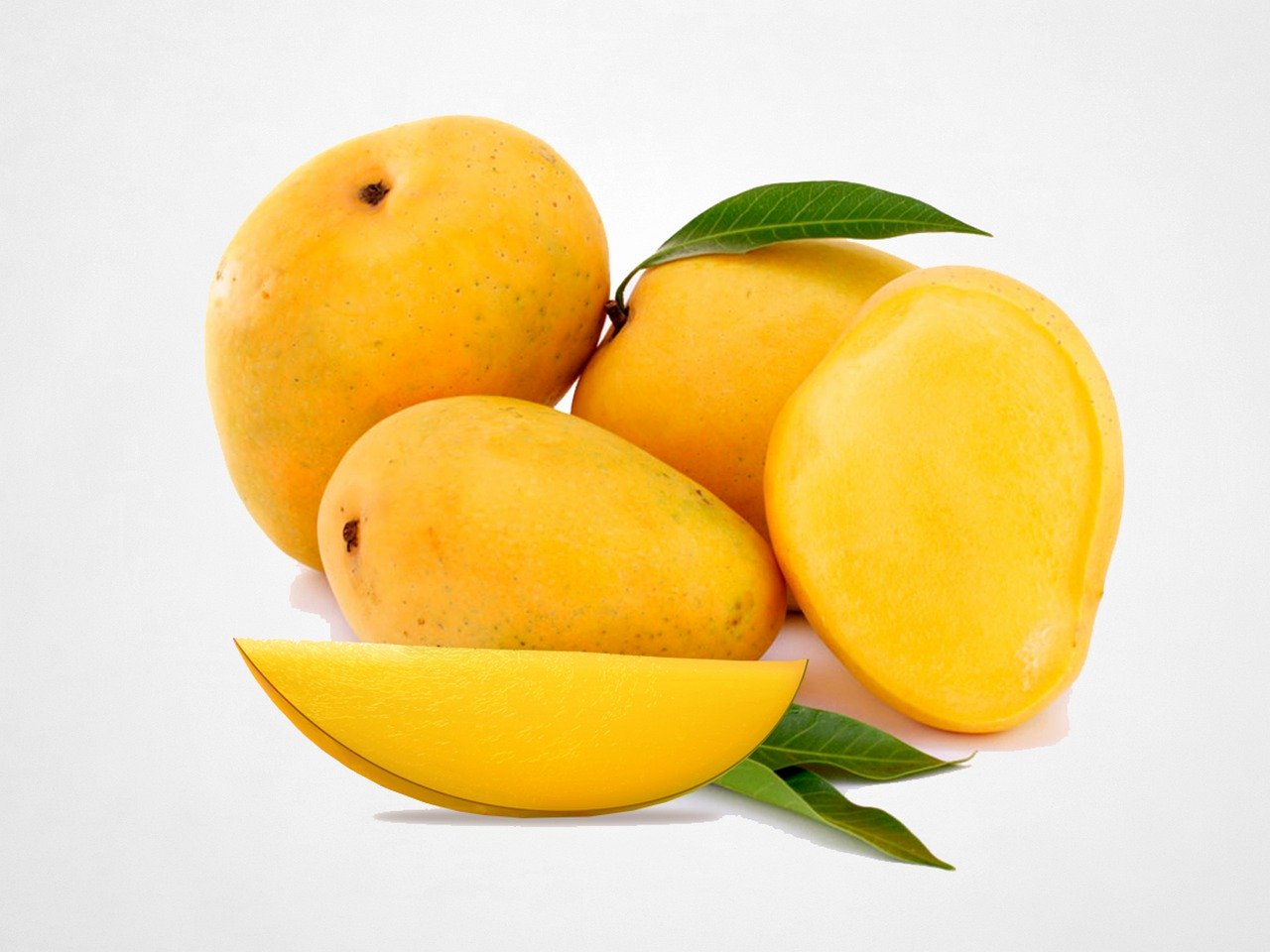
10 Tremendous Benefits Of Mango, Recipes, And SideEffects
glycemic control, people may consume small portions of the fruit approx. 100-150g of edible portion/day or 50 g mango slice thrice a day which is friendlier to glucose metabolism than a larger portion of it consumed with the heaviest meal. The glycemic index may be further lowered by taking mango after consumption of high fiber food such as